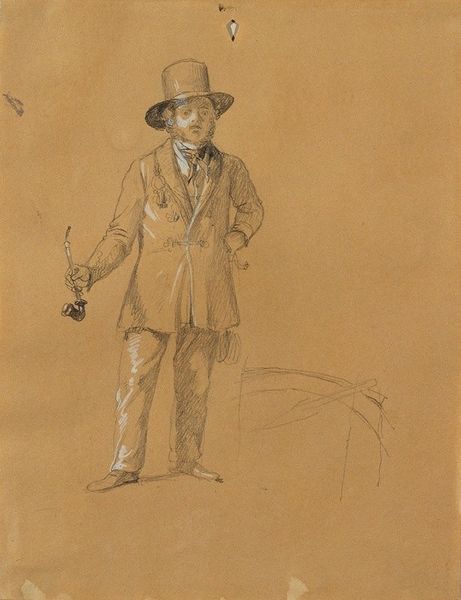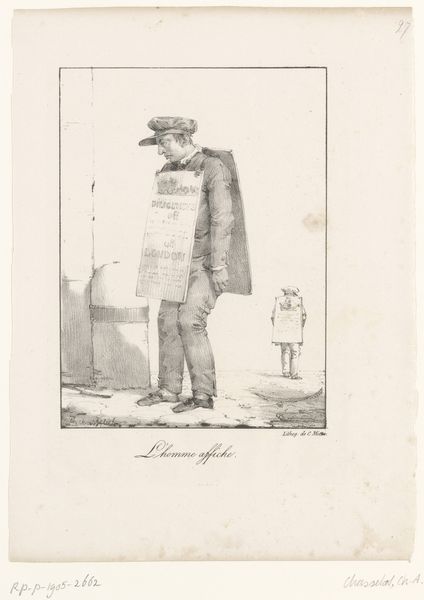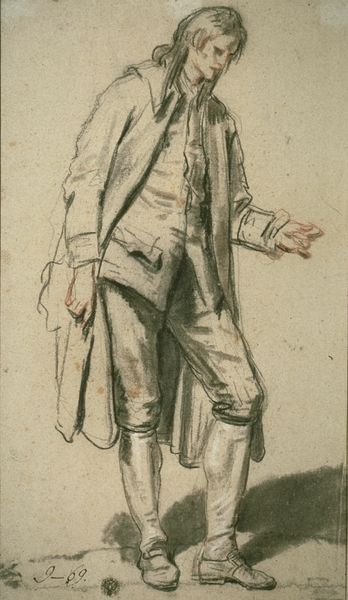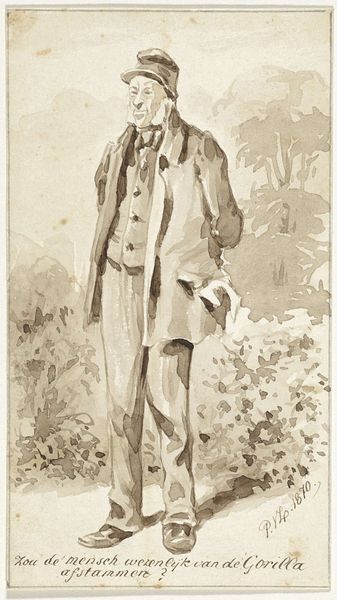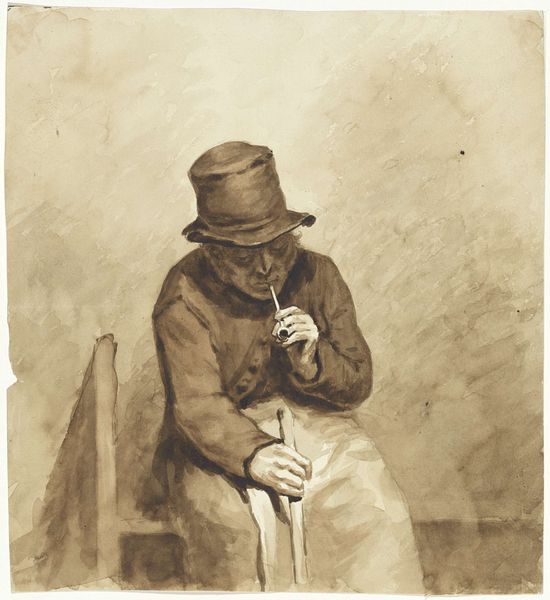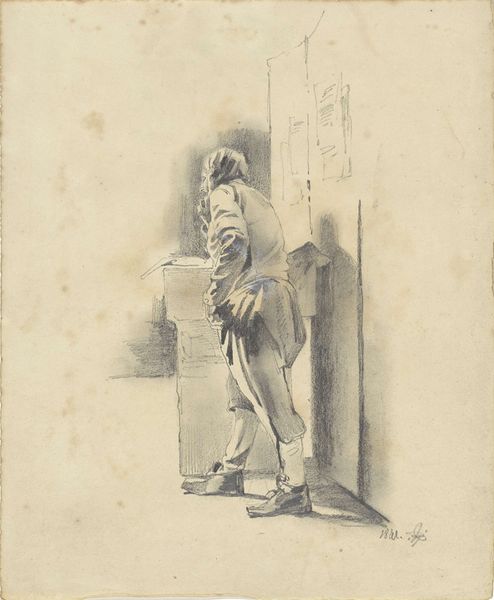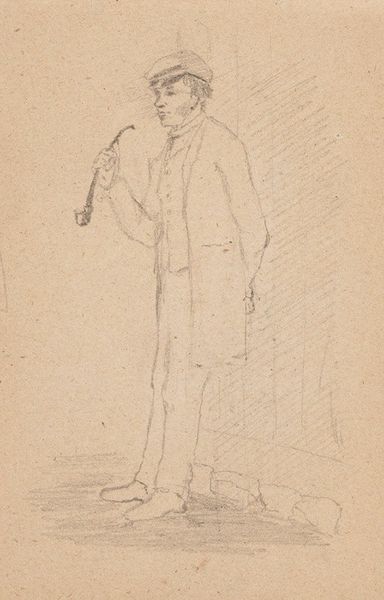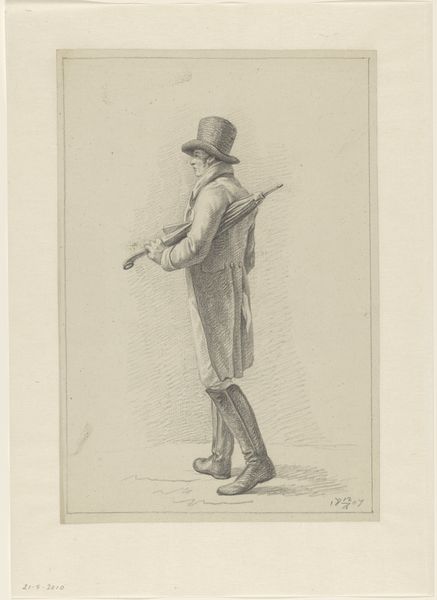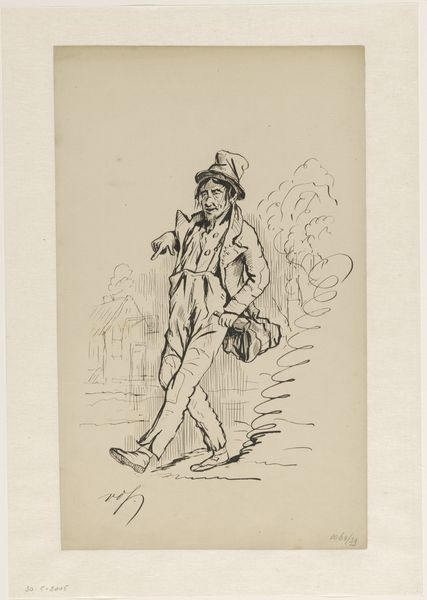
drawing, ink
#
portrait
#
drawing
#
16_19th-century
#
ink
#
portrait drawing
#
pencil work
#
genre-painting
#
realism
Dimensions: height 183 mm, width 158 mm
Copyright: Rijks Museum: Open Domain
Curator: This is "Standing Young Man," a drawing from 1870 by Pieter van Loon, made with ink. It strikes me as quite a somber image. The monochrome palette and the figure's downcast gaze create a mood of quiet contemplation, or perhaps even resignation. What do you make of it? Editor: The use of ink to create such fine detail is remarkable. But beyond the technique, I’m curious about the crates in the background, labeled "FRAGILE". They almost feel more prominent than the figure, setting the context of the work, or manual labour. It also gives more clues to who the figure may be in the artwork, which is probably a clerk working at a warehouse, according to what's written on the sides of the work. What are your thoughts on van Loon's emphasis on the mundane here? Curator: Precisely. The inclusion of those crates and the emphasis on his working class condition shift the focus away from the individual's personality and toward their material existence. Consider the socio-economic context of 1870. What does it say about labor, class, and the industrial revolution to depict someone's status as a warehouse boy for the history books? How does it blur the lines between portraiture and genre painting when it's just an "average person" with mundane objects? Editor: That makes sense. So, instead of focusing on the emotional state, we look at the statement van Loon makes about labor in the 19th century, by the tools that are part of the warehouse's employees labour, correct? Curator: Absolutely. This drawing acts almost like a document, doesn't it? It speaks volumes about the realities of labor and social structures in Van Loon's time. The artistic intention then transforms this figure from an ordinary man to the subject of analysis of a given socio-economical era. It encourages us to think critically about the power structures and social class representations reproduced within artworks and throughout history. Editor: Wow, I never considered looking at portraiture in such a way! Now I wonder about how portraits changed when new production means allowed for cheaper and easier painting production...
Comments
No comments
Be the first to comment and join the conversation on the ultimate creative platform.
